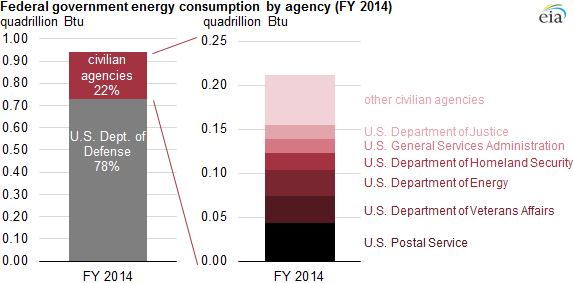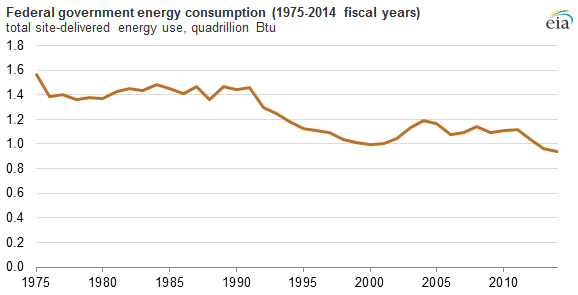
Chones / Shutterstock.com
Agency Energy Use Reduced to 40-Year Low
Defense Department accounts for lion’s share of conservation progress.
The federal government’s overall energy consumption has been cut to its lowest level since recordkeeping began in 1975, the U.S. Energy Information Administration announced on Monday.
The Defense Department demonstrated the most dramatic reductions, in large part due to trims in jet fuel consumption, the unit of the Energy Department said. The entire government in fiscal 2014 ate up 0.94 quadrillion British thermal units, according to the compilation, which shows a steady drop since about 2004 following a rise in the 1980s.
Taking advantage of the climate change summit in Paris, the department also on Monday published a blog post highlighting a “global lighting challenge,” an international race to replace inefficient incandescent bulbs still common in much of the world with 10 billion light-emitting diode-like bulbs.
The United States has joined 13 countries and the European Commission in endorsing and contributing to the 10-billion-bulb goal through investments in research and development and with public-private partnership. “The next step is for participants to commit to stock, sell, promote, finance or implement policies encouraging the sales of advanced lighting fixtures and bulbs,” said the blog written by analysts at Energy’s Office of International Climate and Clean Energy. “These would be big and small businesses, retailers and manufacturers, regional and global development agencies, and local and national governments.”
Domestically, Energy will be working with dozens of municipalities over the next two years to accelerate deployment of high-efficiency outdoor lighting, with the conversion goal of more than 1.5 million lighting fixtures, the analysts said. In 2012, it launched a campaign to boost lighting energy efficiency in parking facilities with a goal of installing modern lighting in 750 million square feet of parking space. And a new effort to improve interior lighting has a goal of replacing 1 million office lights (the equivalent of approximately 100 million square feet of lighted space), with high-efficiency lighting by May 2016.
Around the world, lighting accounts for 15 percent of electricity consumption and 5 percent of greenhouse gas emissions, the analysts said. “At the same time, 1.2 billion people lack access to modern energy services, including reliable lighting. For many, hazardous energy sources like kerosene are the only option.”


Source: U.S. Energy Information Administration, Federal Energy Management Program
(Top image via Chones / Shutterstock.com)







